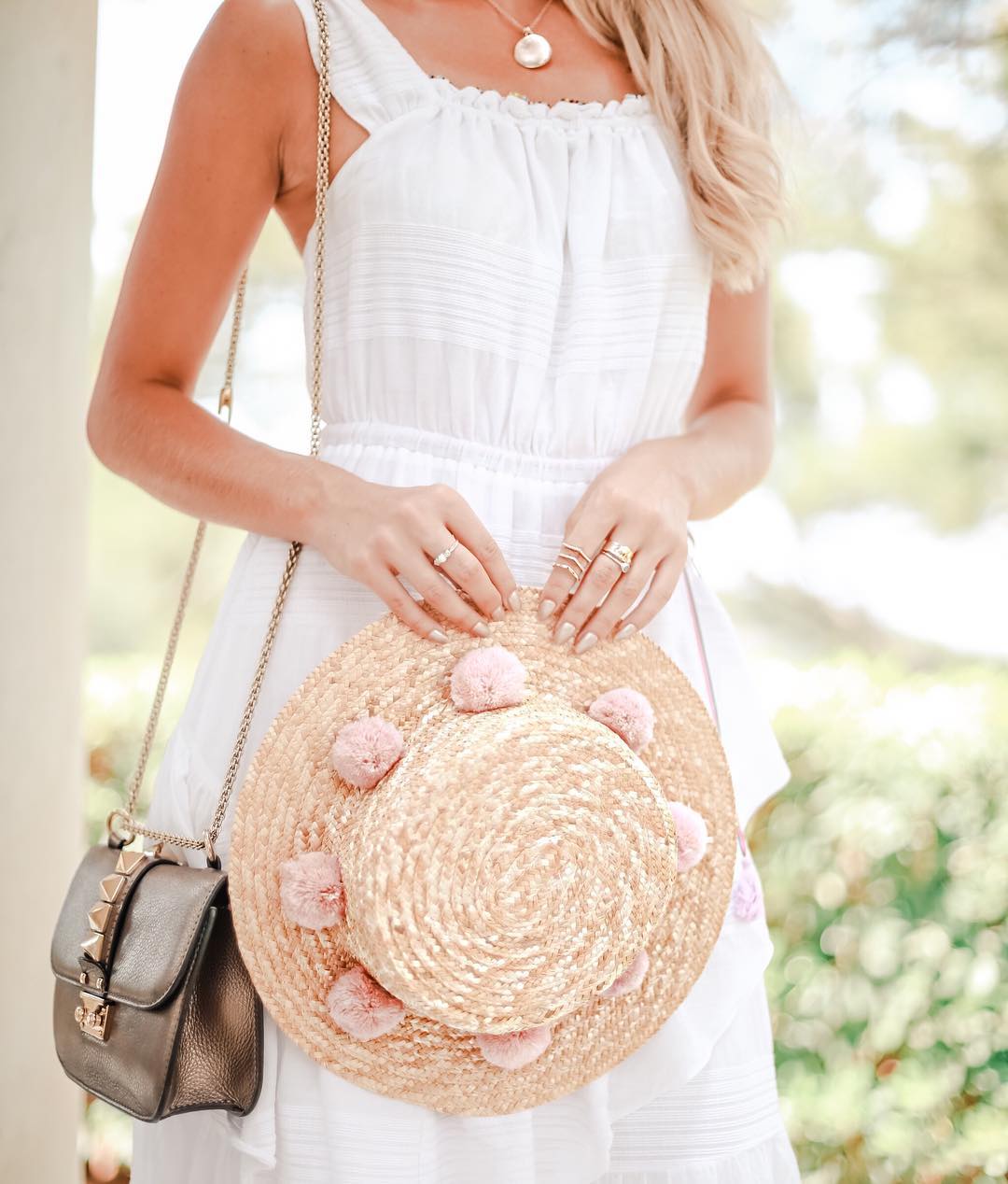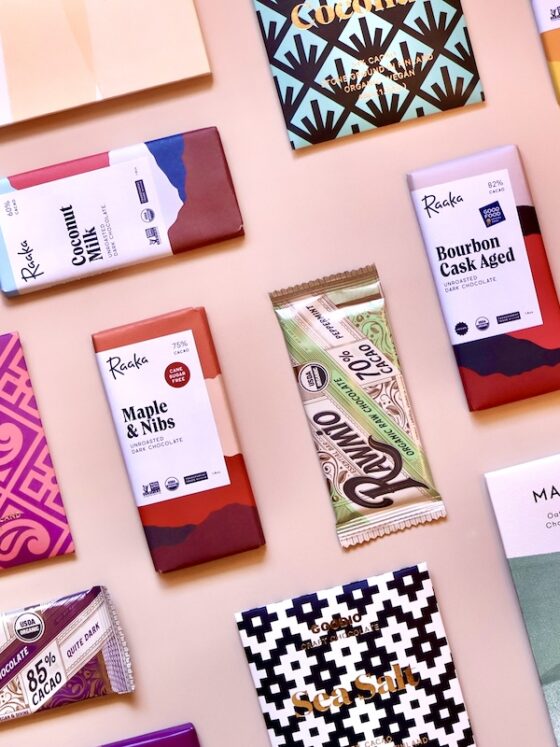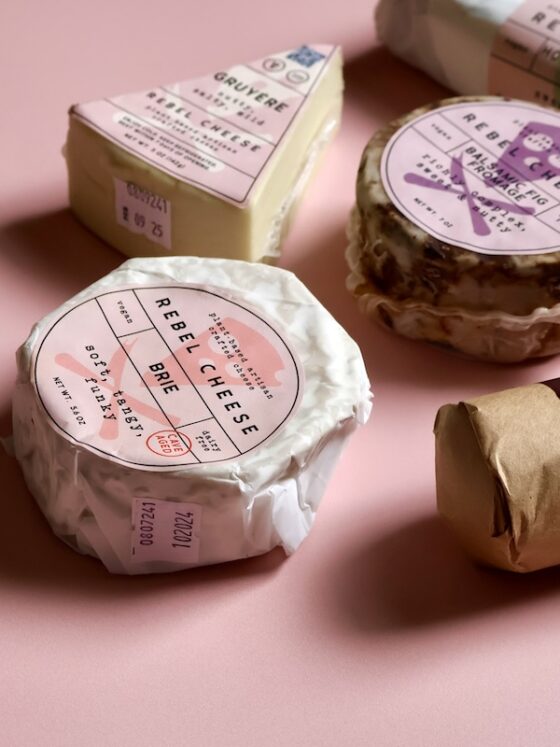How to Make the Perfect Vegan Charcuterie Board
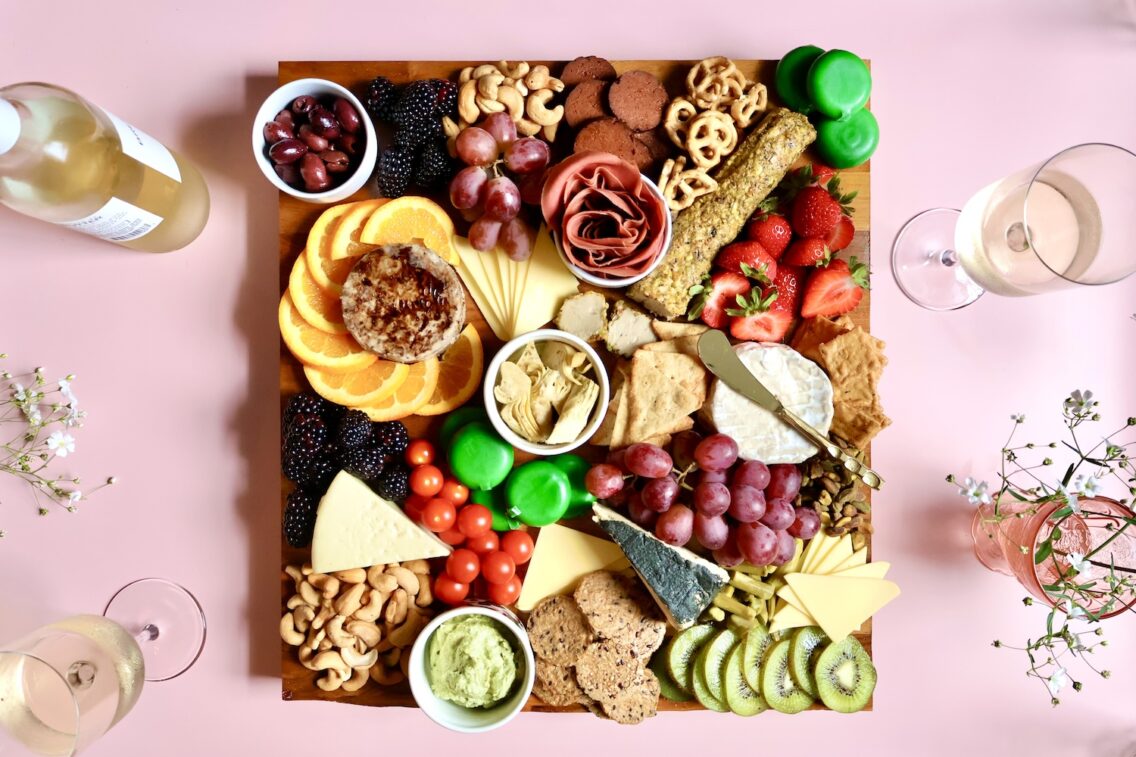
This post contains affiliate links, so if you make a purchase I may earn a commission at no extra cost to you. Learn more here.
If you’re worried that a vegan charcuterie board will feel limiting, au contraire. The plant kingdom offers endless color and creative possibility, so the only limit is your imagination. (And possibly the availability of plant meats and cheeses near you—more on that later.) Although “charcuterie” traditionally refers to cured meats, there are so many directions you can take with your vegan spread. Keep it classic and feature gourmet, plant-based meats and cheeses, or showcase the best of the season’s fruits and vegetables. Or anything in between. The choice, and all the creative fun to be had, is yours.
How to Build a Vegan Charcuterie Board
Whether you’re a long-time plant-based eater looking for inspiration, or a hostess or host looking to delight your plant-forward friends, building a vegan charcuterie board can be a hoot. There are just a few considerations to keep in mind:
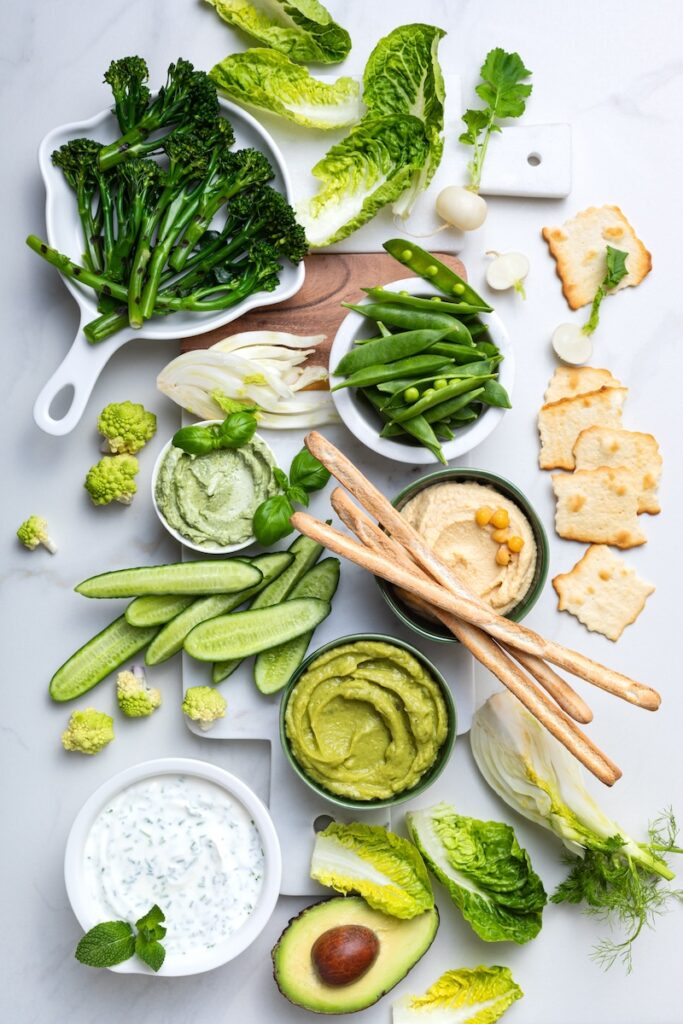
1. Ingredient Sourcing: As you’ll discover later on in this post, some of the best vegan meats and cheeses are easiest to purchase online. That may mean long lead times (up to 1.5 weeks), so plan accordingly if your event is right around the corner.
2. Time & Effort: If you’re up for the challenge, making certain elements from scratch (like dips and spreads) will take your vegan charcuterie board to the next level. But you may already have plenty of party planning on your plate, in which case store-bought dips and spreads will do just fine.
3. Cost: It’s easy to spend a lot on a fancy charcuterie board. Upscale vegan meats and cheeses tend to cost a pretty penny, as do certain vegan dips and spreads. If your special occasion will spare no expense, let loose. Otherwise, you can focus on veggies and homemade items for a delicious and more cost-effective spread.
Key Components of a Vegan Charcuterie Board
As long as you have enough different flavors, textures, and colors to keep things interesting, you can’t really go wrong. In terms of assembly, a good rule of thumb is to begin by placing your biggest and/or focal items like meats, cheese, and spreads, and then layer in your other ingredients. The best charcuterie boards seem to skirt the line between order and chaos, so have fun with the process.
Here are the categories to incorporate:

Bread & Crackers
The cornerstone of any charcuterie spread is the delicious, carby base. Crackers offer easy stacking, visual appeal, and variety in size, shape, crunch, flavor, and ingredients (e.g. it’s easy to find good gluten-free crackers).
But few things bring a board together better than a baguette. Drizzle it with a little olive oil and pop it in the oven at 300 degrees for a few minutes. Then delight in that perfect crackle when you give it a little squeeze. You can slice it yourself or leave it whole for your guests to slice or pull apart.
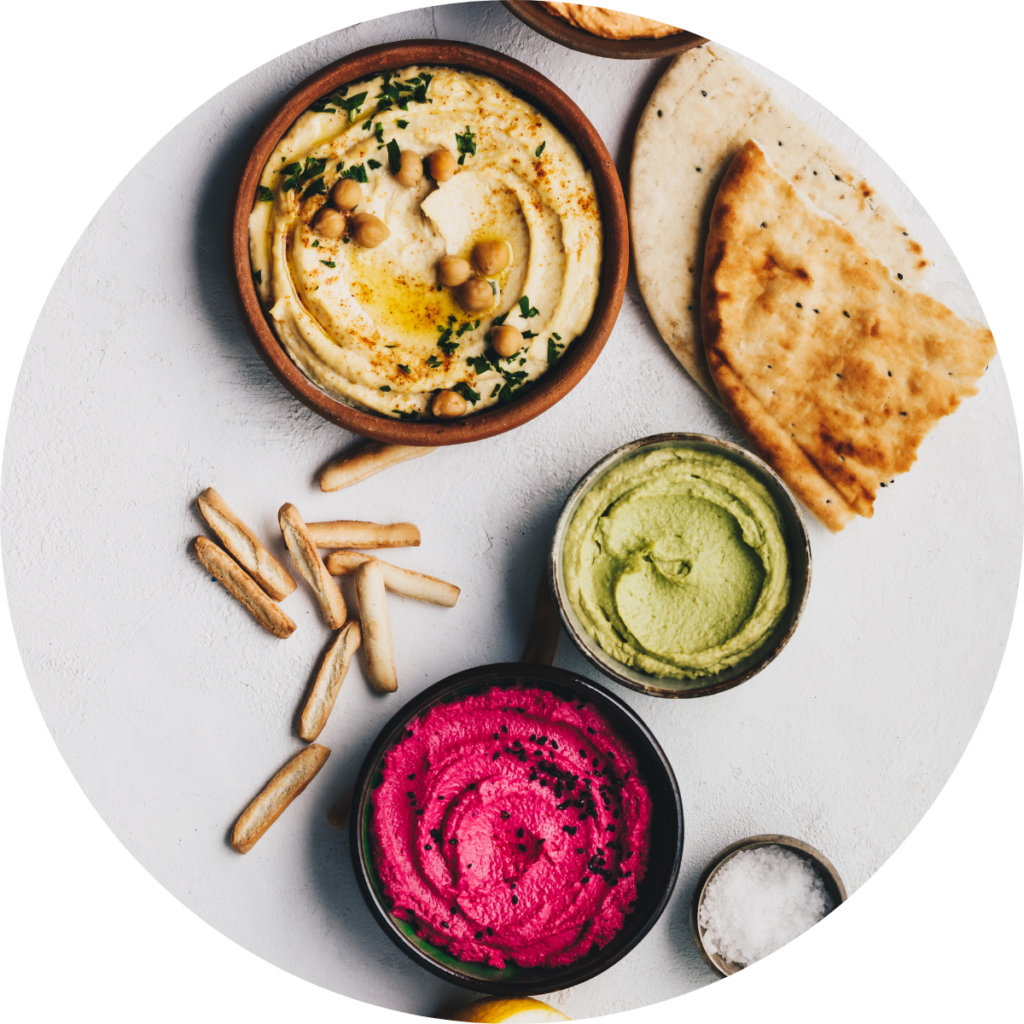
Spreads & Dips
Like bread and crackers, spreads and dips are fundamental to a successful vegan charcuterie board — especially if you opt out of plant meats and cheeses (more on that below). All other board components will benefit from something spreadable and dippable. Mix it up with dips and spreads that are savory, sweet, spicy, creamy, or all of the above.
Depending on your time constraints, you can usually find lovely (if basic) options at your local grocer, like hummus and a vegan cheese dip. Jams and preserves are also top-notch. If you have the time and motivation, you can make an easy plant-based dip or two to elevate your board with something freshly prepared.
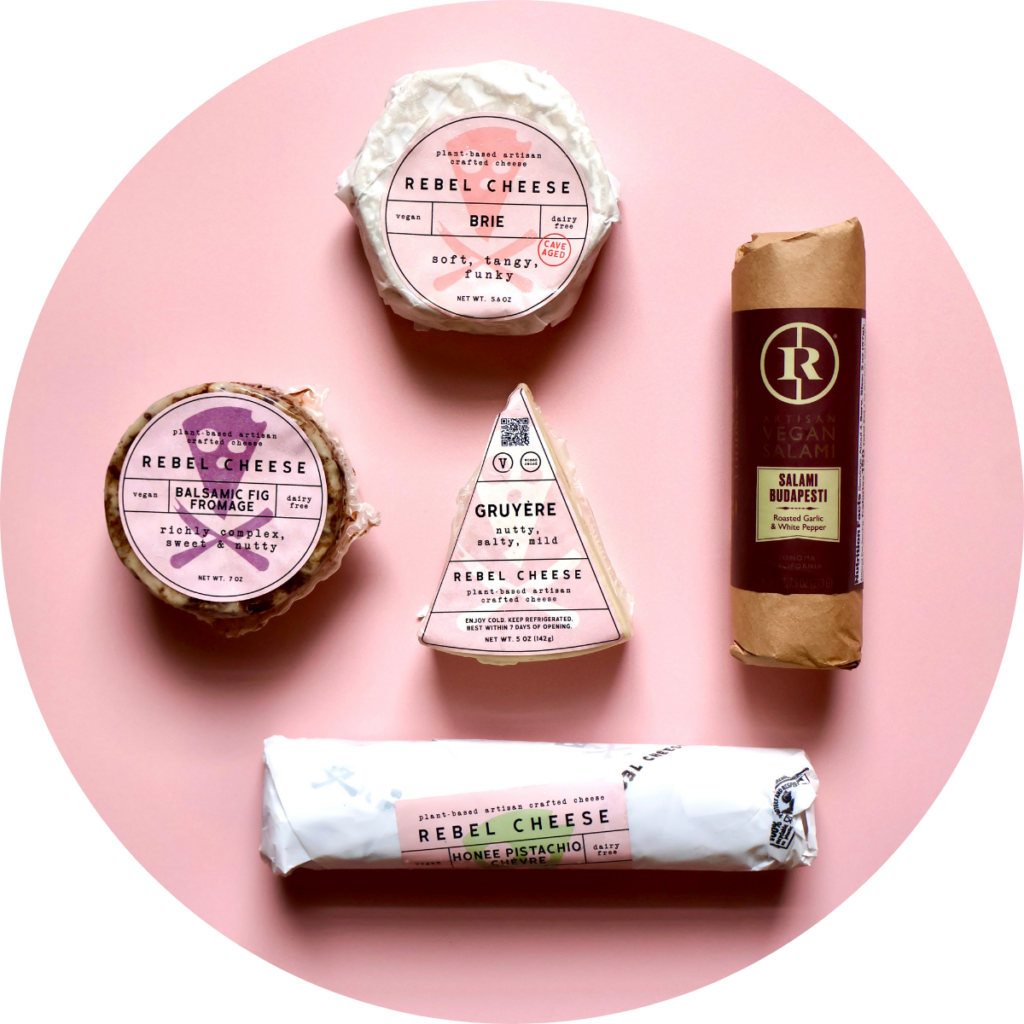
Vegan Meats & Cheeses [Optional]
Just how are the meats and cheeses optional on a charcuterie board? Well, we can be trendy and call it a “grazing board” instead. But the point is that these elements are not essential for a wow-worthy vegan charcuterie board. I underscore this because, depending on where you live, charcuterie-appropriate vegan meat and cheese can be hard (or pricey) to find.
If you live near a Whole Foods or other natural foods store, you may find some good options there. (See the next section for specific ideas.) But if you choose to go a simpler route, know that you can still make an exceptional vegan charcuterie board using just in-season produce, fresh bread, and homemade dips.
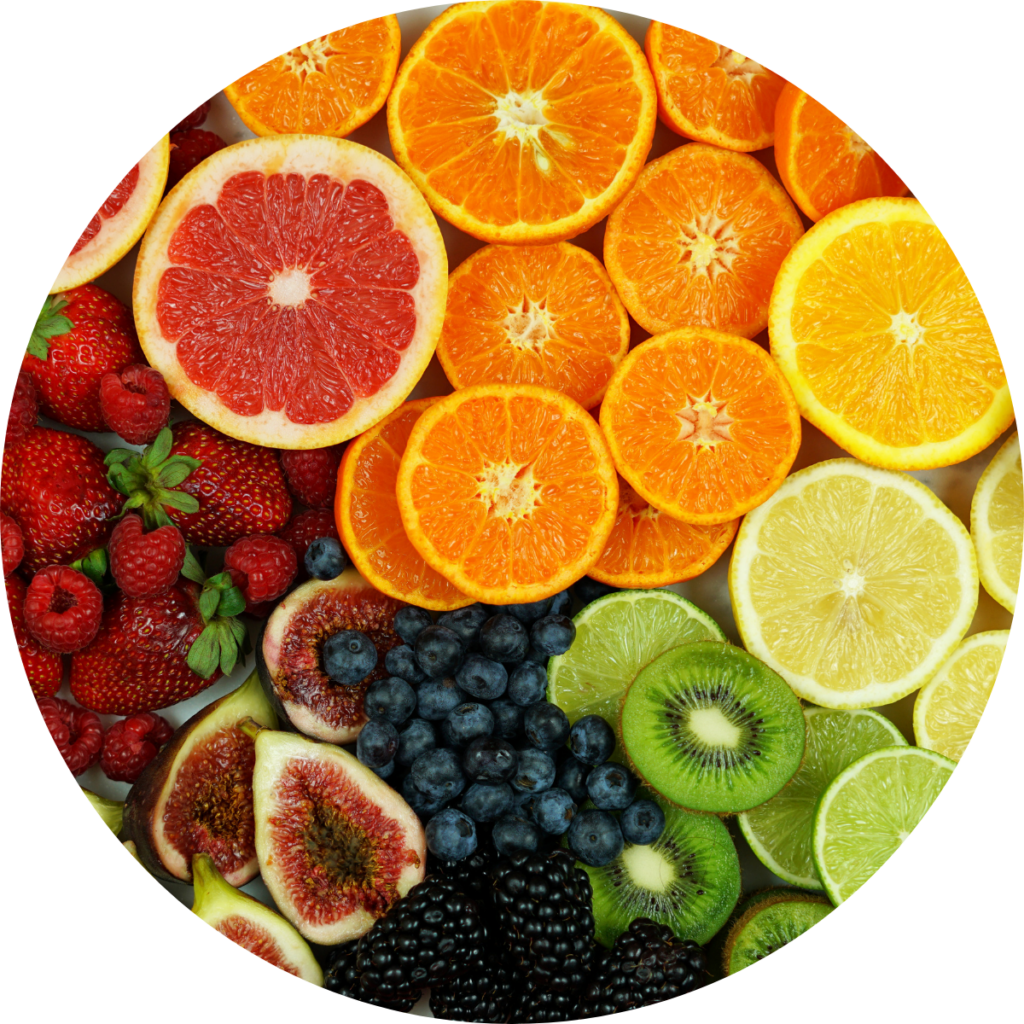
Fruits
Go wild with fruits on your board. They’ll add color, texture, and some welcome, sweet variety between savory items. Grapes are a classic because they stay together on their vine and last well in the open air. Berries are another lovely choice that looks beautiful and pairs well with spreads and cheeses.
But the sky is the limit. Figs, apples, and pears are divine, as are citrus fruits, melons, and kiwis. Sprinkle in some pomegranate seeds! And in cooler weather, try dried fruits like apricots or dates for a little seasonal flair. Just avoid adding super juicy fruits (like pineapple or mango) if they’re not in their own bowl, to keep things non-soggy. Relatedly, skip the bananas.
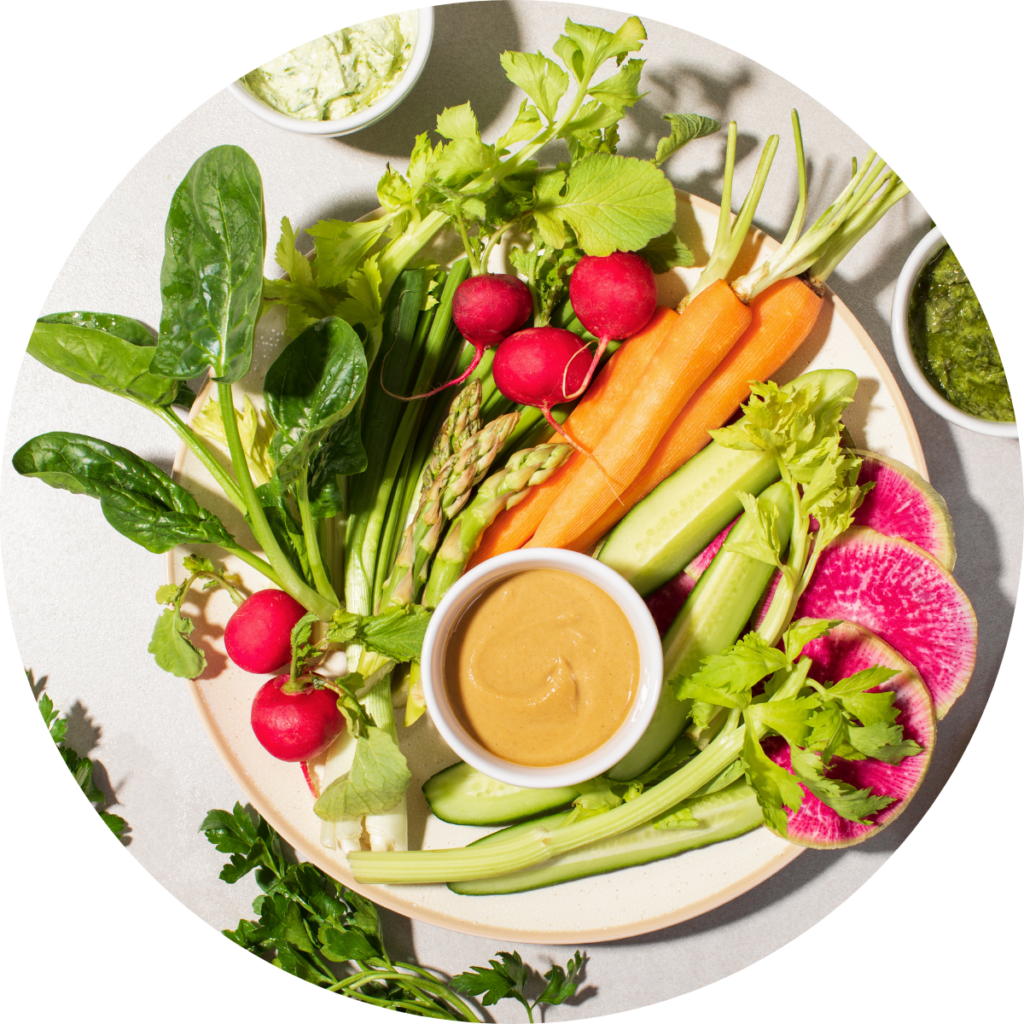
Veggies
As with fruits, add veggies to your board with reckless abandon. Cucumbers are a great carrier for dips, and are crisp and refreshing on their own — especially Persian cucumbers. Add in cherry tomatoes, carrot sticks (or rainbow carrots for fun), celery, radishes, snap peas, and anything else you love. Throw in some endive leaves if you’re fancy!
Cut your veggies into small to medium pieces for easy dipping and munching. Just avoid watery or pungent veggies (e.g. raw zucchini and onions, respectively). Bonus points if your produce is in-season, as that will take the flavors to the next level.
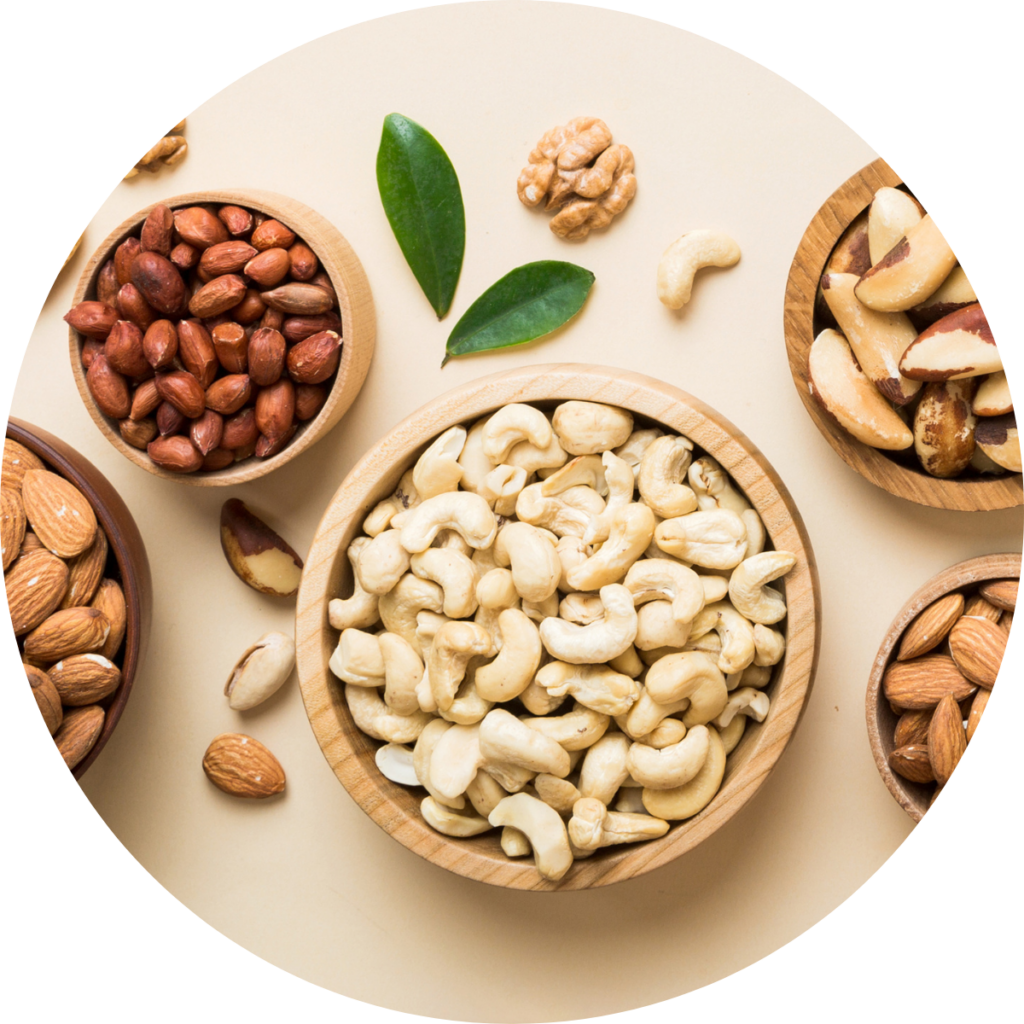
Nuts
Barring any allergies at your gathering, nuts bring some important crunch to the mix. Almonds, cashews, pistachios, pecans, and walnuts are classics. Or you can mix in some slightly more exotic options, like hazelnuts, macadamia nuts, brazil nuts, or pine nuts. For ease, you can also opt for a nice nut mix so there’s something for everyone.
Depending on the season and your other board components, candied nuts can offer a little fun and intrigue.
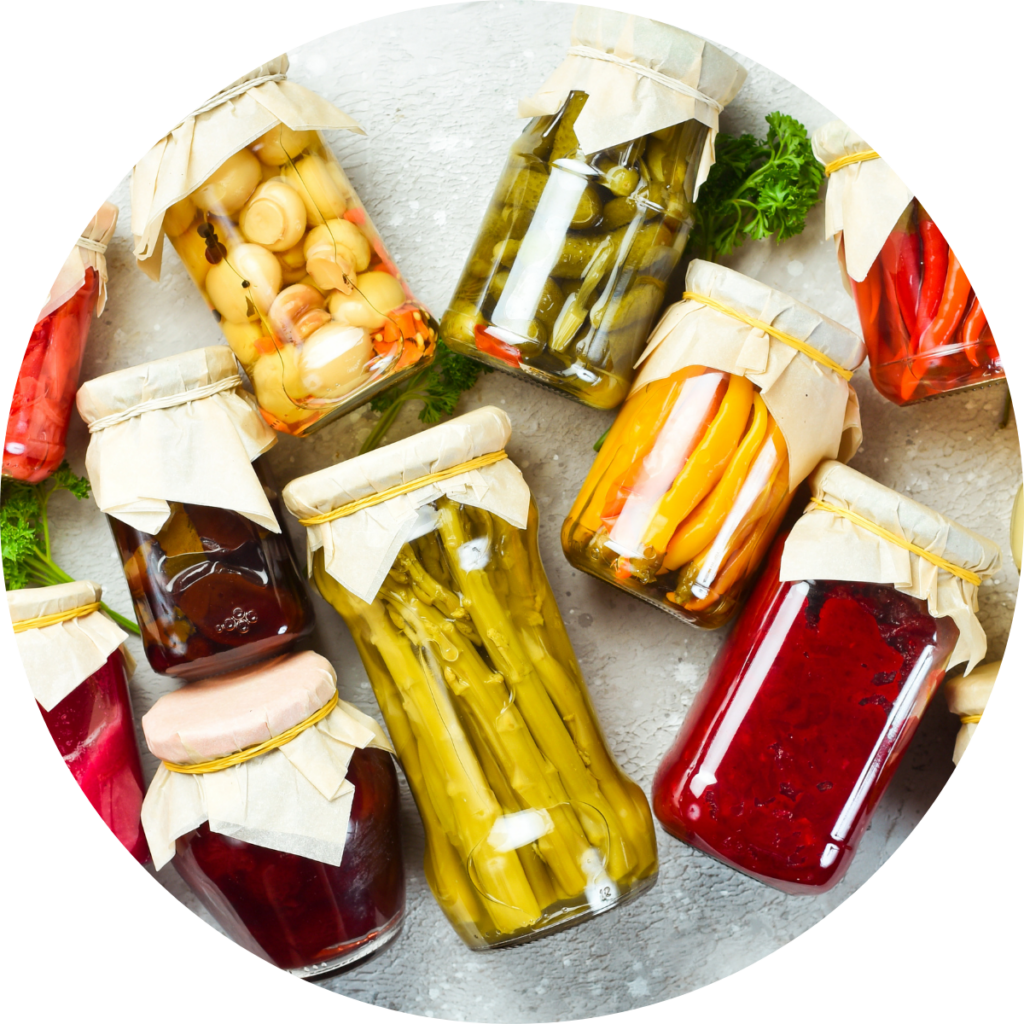
Pickled Things
Salt lovers will need no convincing on this point. Add in your favorite pickles, olives, artichoke hearts, pickled asparagus, marinated mushrooms, and more. That tangy, briny profile will bring a vegan charcuterie board to new heights; it opens up so many flavor combinations. If you’re feeling wild, you can even branch out into more exotic pickled things, like green beans, green tomatoes, radishes.
A note on olives that may go without saying: pitted olives are best, so guests don’t have to hunt for a place to dispose of the pits.
Where to Buy Vegan Meats & Cheeses
As aforementioned, it can be a little tricky to find suitable meats and cheeses for your vegan charcuterie spread. Here are three possible approaches:

1. Check the Grocery Store: If you live in or near a vegan-friendly city, you’re in luck! You’ll likely find some solid options at your nearest natural foods store. Regardless of where you live, you may be able to find options in the natural or vegan section of your conventional grocer. It’s worth a look. (E.g. Chao cheese slices, which are very tasty, are widely available. And plant-based Babybels.) If you discover a meat or cheese brand that interests you online, visit the store locator on their site to see if and where it’s available near you.
2. Shop Online: This will probably be your best bet for laying hands on the exact vegan meats and cheeses you’re looking for. The caveats are that sometimes a) you’ll encounter very long lead times for your order, which can be impractical if your party or gathering is coming up shortly, and b) shipping may prove prohibitively expensive. If you want to explore this route, I recommend checking out Rebel Cheese (brand), RIND (brand), Riverdel (marketplace), Besties (marketplace), and The Vreamery (marketplace).
3. Make Your Own: If this idea fills you with the same cold dread that it fills me with, then forget I brought it up. But if you’re an enterprising type who loves to cook, GO for it (and please let me know how it goes). There are several highly-rated books on making vegan cheese from scratch that you can find here.
Themed Vegan Charcuterie Board Ideas
If the more open-ended approach to creating a vegan charcuterie board doesn’t work as well for you, consider building your board around a theme. Here are some ideas to get started:
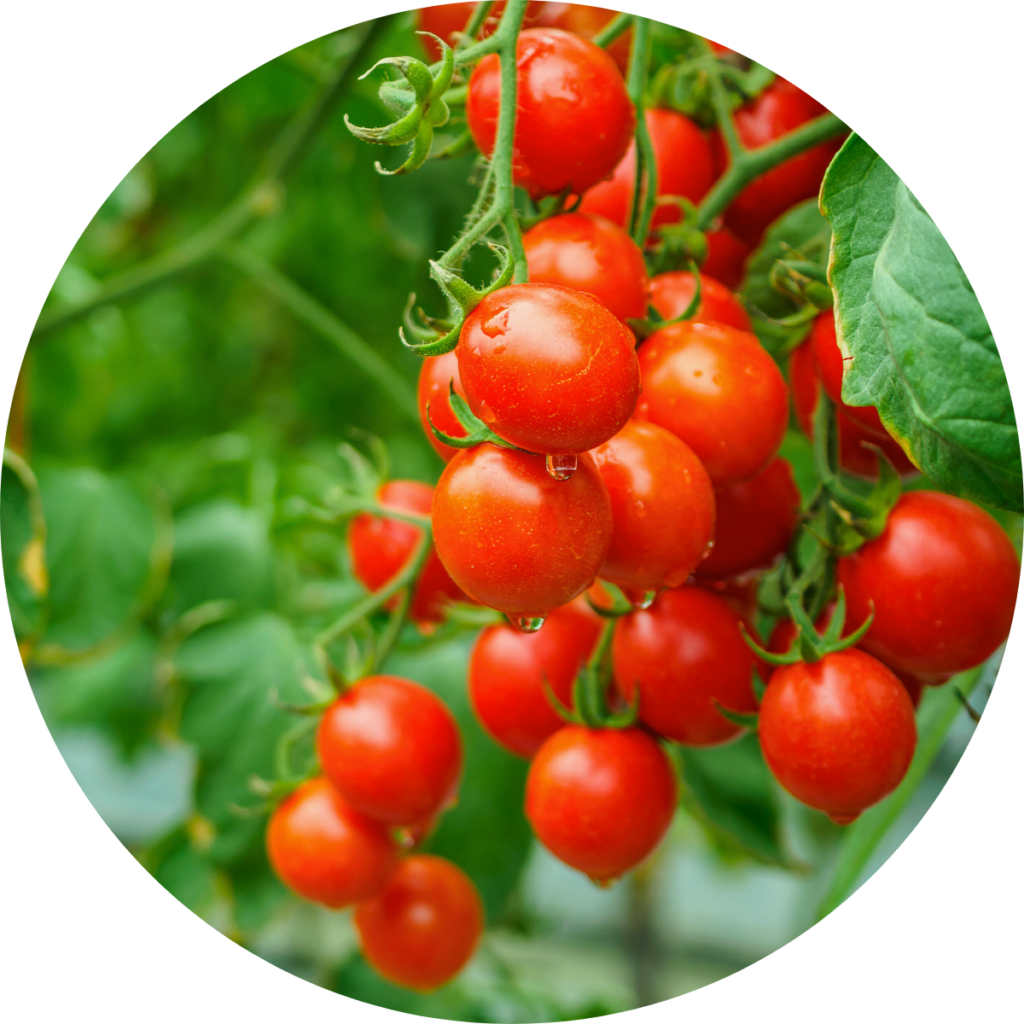
Italian-Inspired
An easy-to-love, fun, and festive flavor profile.
- Carbs: Sliced focaccia, bruschetta toasts, breadsticks
- Dips: Vegan pesto, vegan olive tapenade, white bean dip
- Meat & Cheese: Little vegan meatballs, vegan mozzarella, vegan carpaccio
- Fruit & Veg: Cherry tomatoes, grilled zucchini rounds, roasted red peppers, melon balls
- Nuts: Marcona almonds, roasted pine nuts
- Pickled: Artichoke hearts, olives, cauliflower, mushrooms
- Extras: Fresh basil sprigs, balsamic glaze drizzle
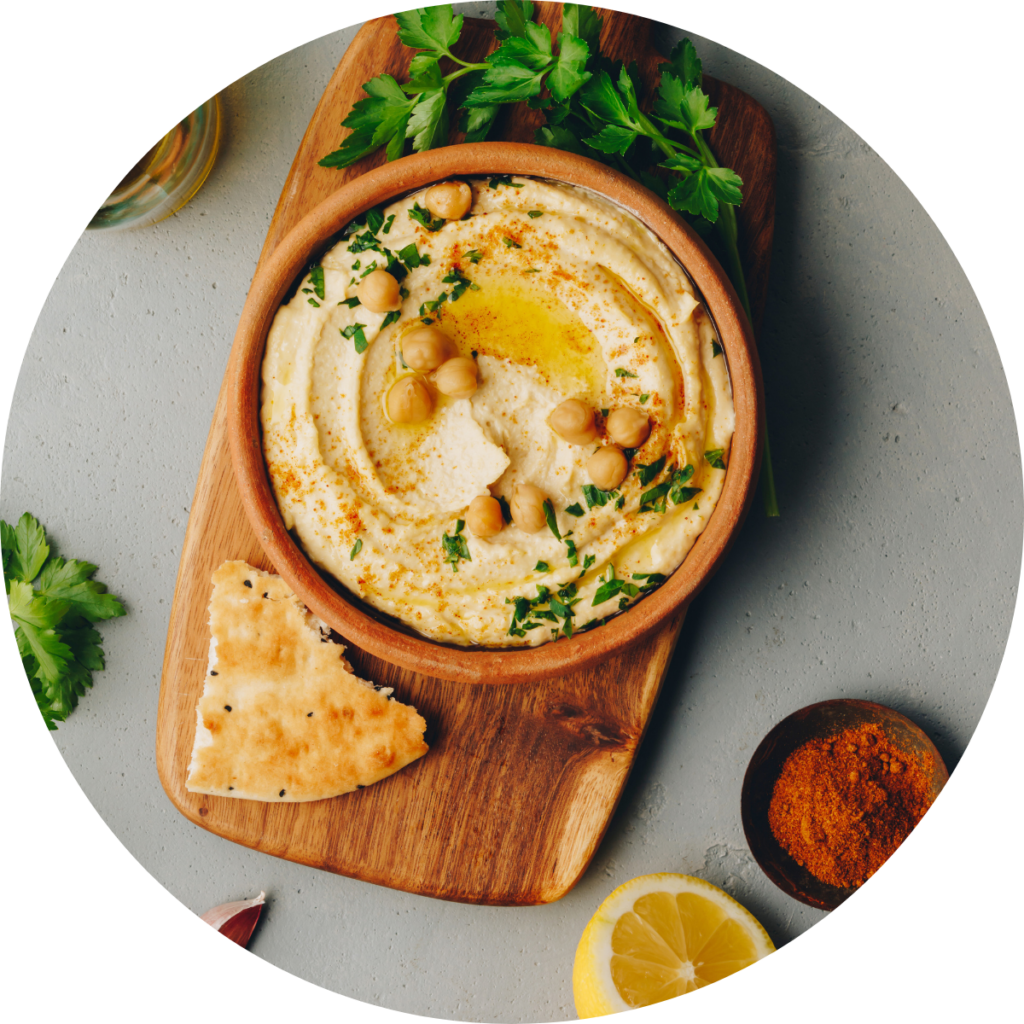
Mediterranean-Inspired
A delicious, wholesome board that’s both hearty and refreshing.
- Carbs: Pita wedges
- Dips: Hummus, vegan tzatziki
- Meat & Cheese: Falafels (homemade or store bought), vegan feta
- Fruit & Veg: Cucumbers, radishes, grape tomatoes, roasted red pepper
- Nuts: Pistachios
- Pickled: Mixed olives, red onion, pickles
- Extras: Stuffed grape leaves, roasted chickpeas
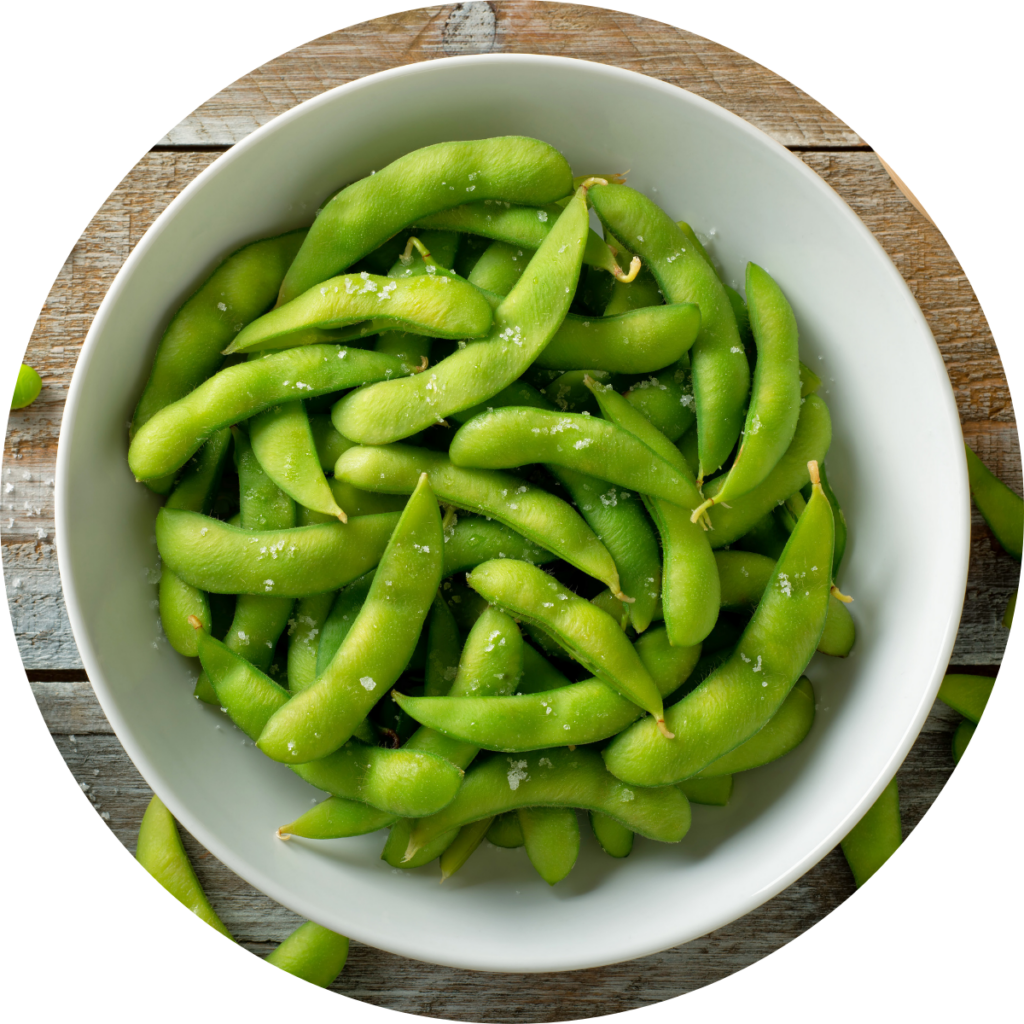
Asian-Inspired
A fresh, vibrant, umami-forward spread with flavor aplenty.
- Carbs: Rice crackers
- Dips: Vegan spicy mayo, edamame hummus, miso-ginger dip
- Meat & Cheese: Teriyaki tofu bites
- Fruit & Veg: Edamame, cucumber, watermelon radishes, sliced mango, mandarin orange segments, starfruit
- Nuts: Wasabi almonds, sesame-coated cashews
- Pickled: Ginger, kimchi
- Extras: Veggie spring rolls, seaweed sheets
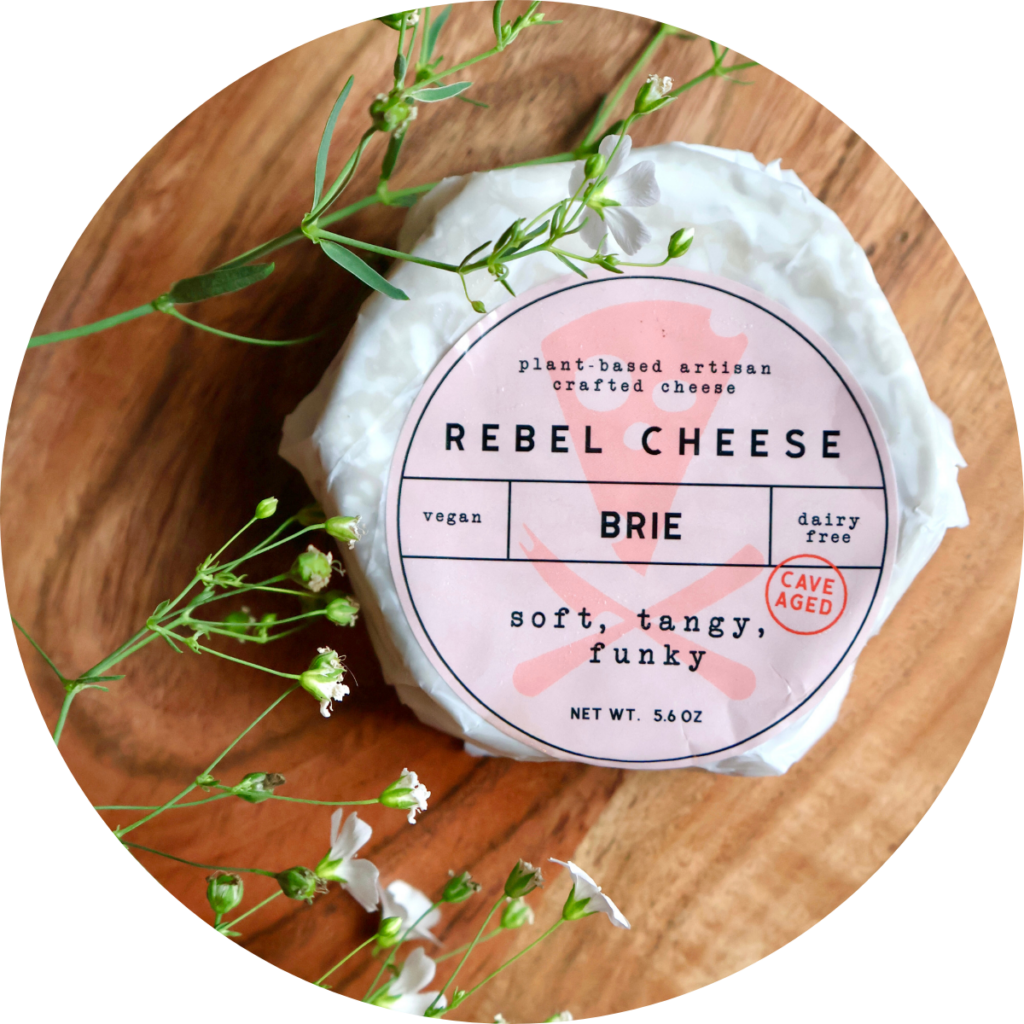
French-Inspired
A très chic array of goodies featuring classic French fare, veganized.
- Carbs: Sliced baguette, crostini, seeded crackers
- Dips: Vegan pâté, fig jam, dijon mustard
- Meat & Cheese: Vegan brie, vegan chèvre
- Fruit & Veg: Grapes, figs, apple slices, radishes, endive leaves
- Nuts: Walnuts, hazelnuts
- Pickled: Cornichons, cocktail onions
- Extras: Dark chocolate squares
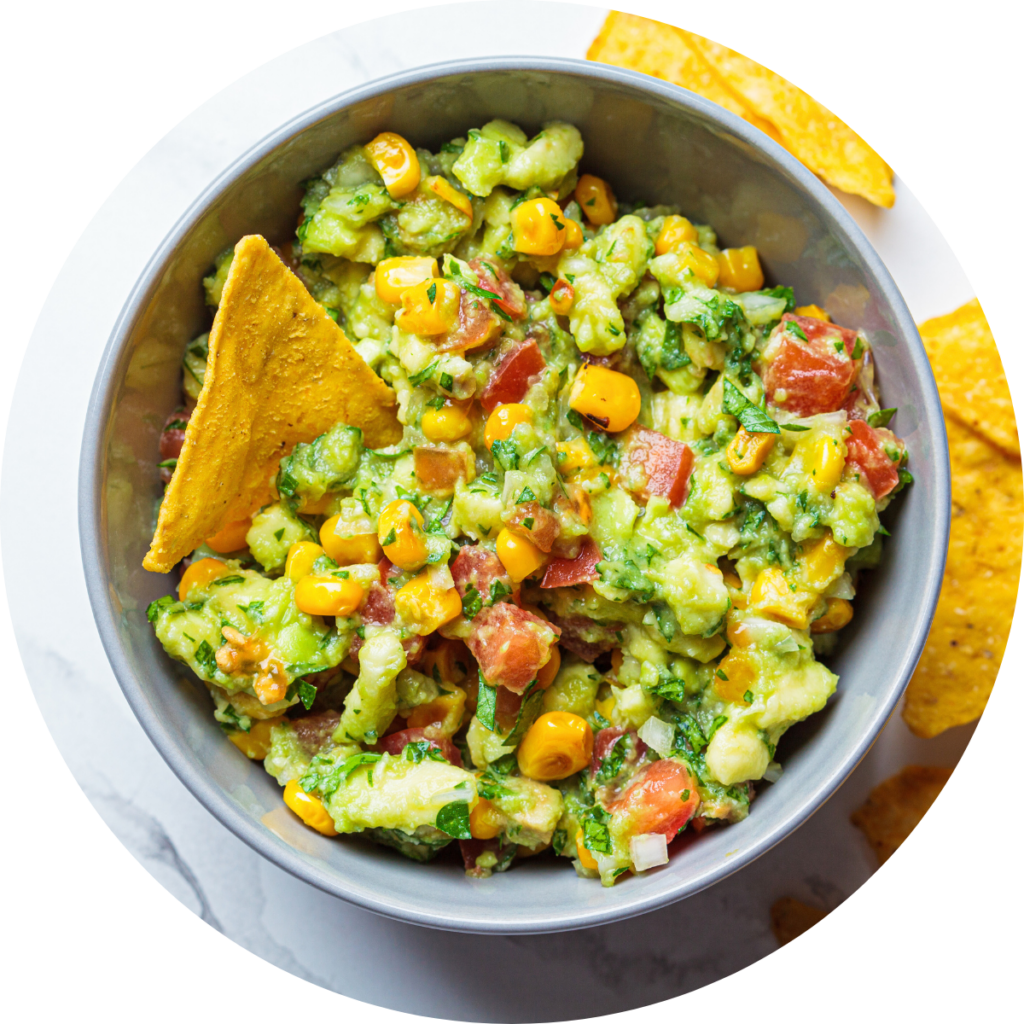
Mexican-Inspired
A variety of zesty flavors, varied textures, and creamy guacamole make for a well-rounded board.
- Carbs: Corn chips, plantain chips, mini tortillas
- Dips: Guacamole, salsa (roja + verde), vegan queso (homemade or store bought), black bean dip
- Meat & Cheese: Vegan chicken tenders
- Fruit & Veg: Jicama sticks, cucumber slices, cherry tomatoes
- Nuts: Wasabi almonds or sesame-coated cashews
- Pickled: Red onions, jalapeños
- Extras: Lime wedges, dippable chili-lime seasoning
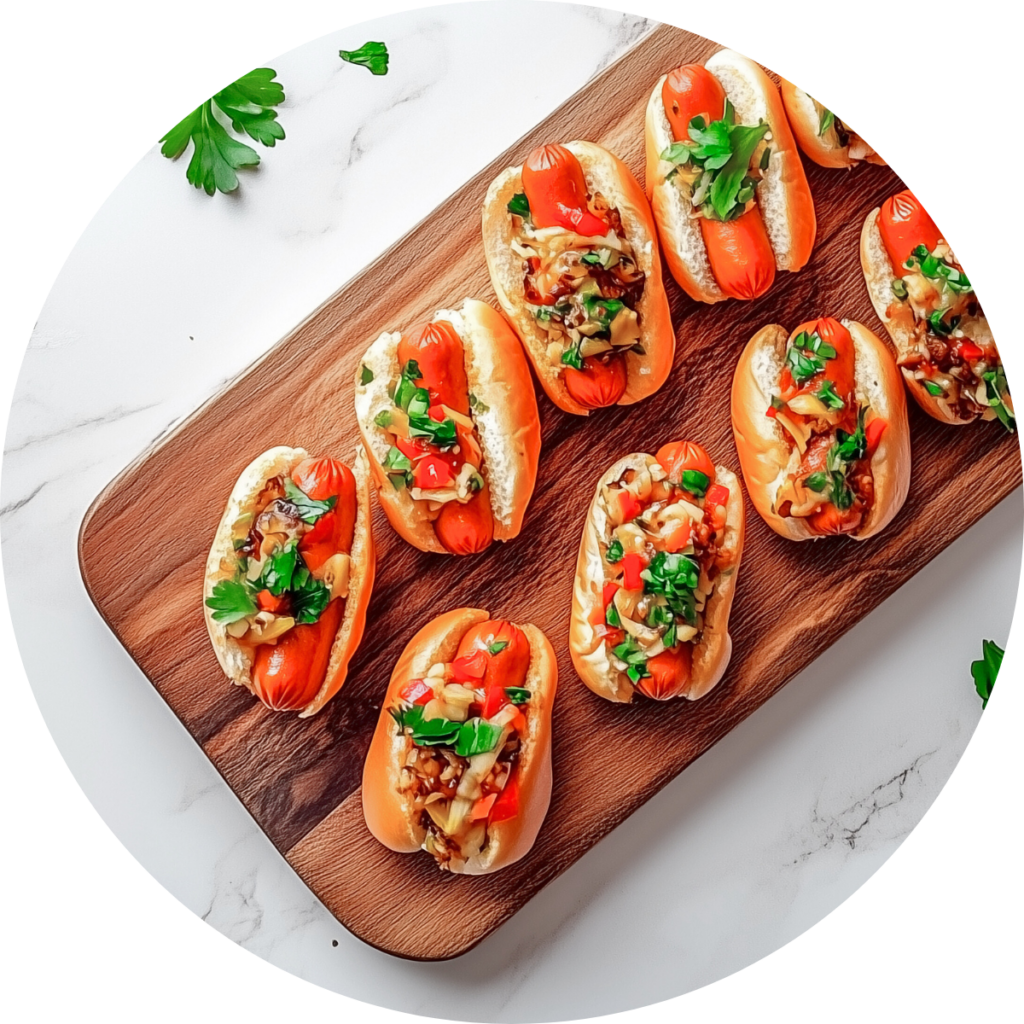
Game Day
Sports, am I right? A board for those who care about the game and also for those who care much, much more about the food.
- Carbs: Corn chips, pretzel bites
- Dips: Vegan spinach-artichoke dip, vegan ranch
- Meat & Cheese: BBQ jackfruit sliders, mini vegan corndogs
- Fruit & Veg: Carrots, celery, cherry tomatoes
- Nuts: Peanuts (spicy and/or sweet)
- Pickled: Pickles
- Extras: Caramel corn, Lays chips
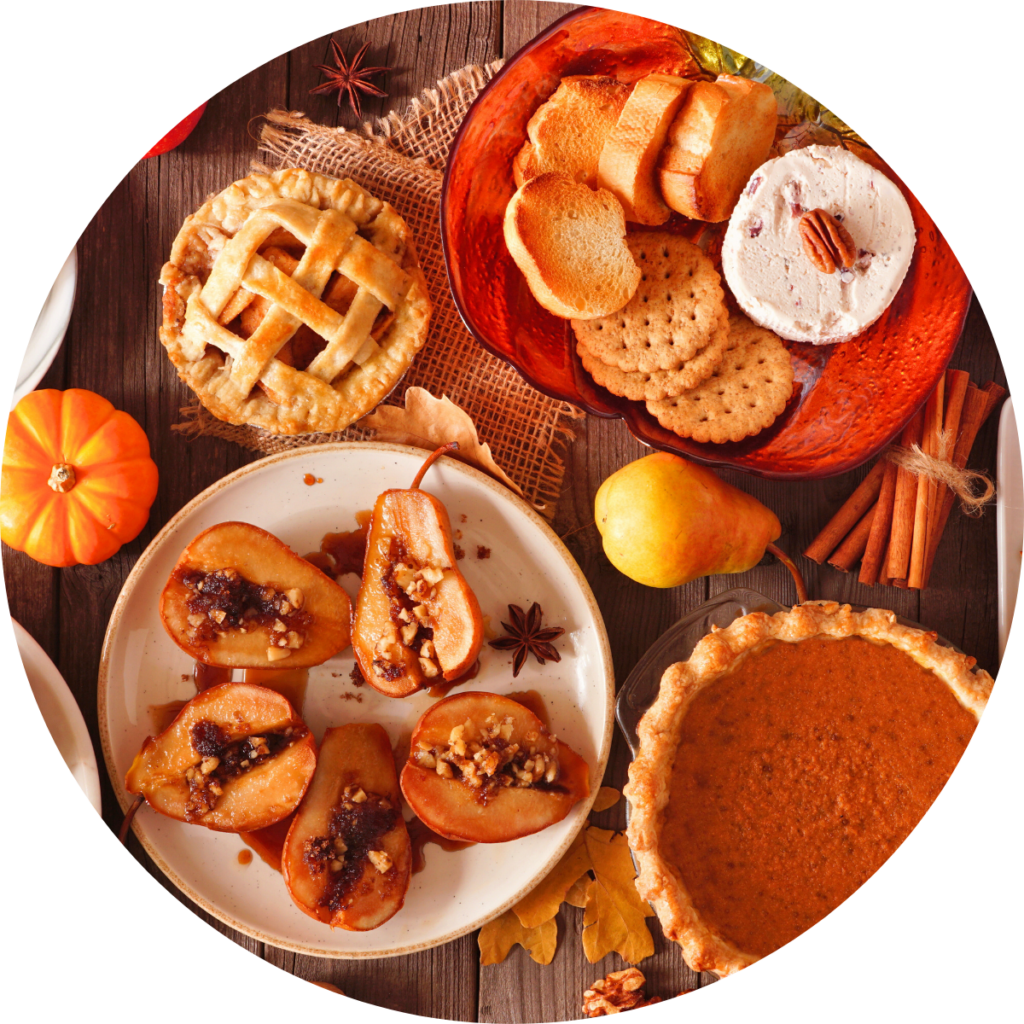
Fall Harvest
A cozy and rustic spread celebrating the flavors of autumn, with spiced dips, roasted vegetables, and seasonal fruits.
- Carbs: Baguette, whole grain crackers
- Dips: Pumpkin hummus, cinnamon cashew butter, apple butter
- Meat & Cheese: Vegan cheddar cubes
- Fruit & Veg: Roasted butternut squash cubes, apples, pears, figs, grapes, dried cranberries
- Nuts: Candied pecans, maple-glazed almonds
- Pickled: Carrots, cornichons
- Extras: Caramel popcorn, dark chocolate
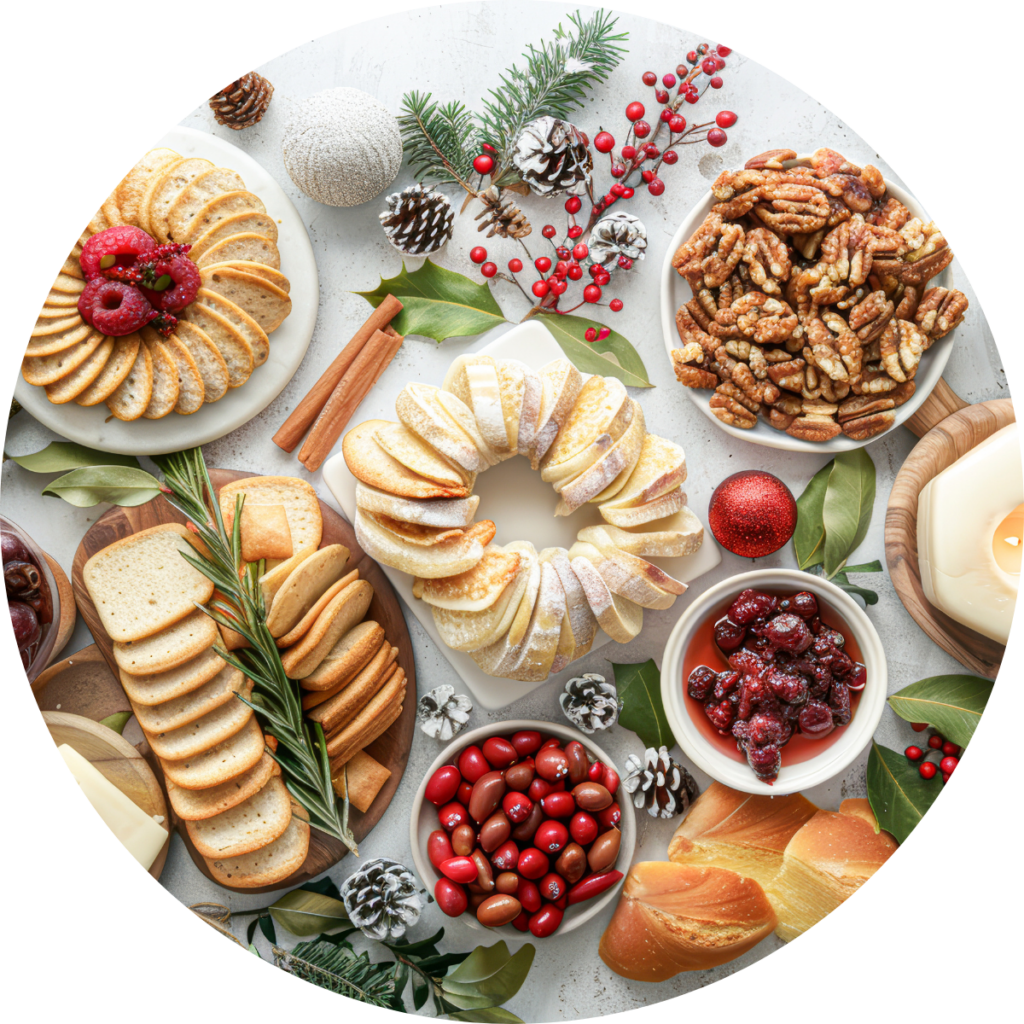
Winter Holiday
A comforting spread featuring rich, hearty flavors and festive treats to bring warmth to winter gatherings.
- Carbs: Whole grain baguette, rosemary crackers
- Dips: Cranberry chutney, cashew cheese dip
- Meat & Cheese: Seitan slices, vegan salami, truffle brie
- Fruit & Veg: Roasted veggies (Brussels sprouts, carrots, fingerling potatoes)
- Nuts: Spiced pecans, candied walnuts, chestnuts
- Pickled: Red cabbage
- Extras: Cranberries and evergreen sprigs (for decor)
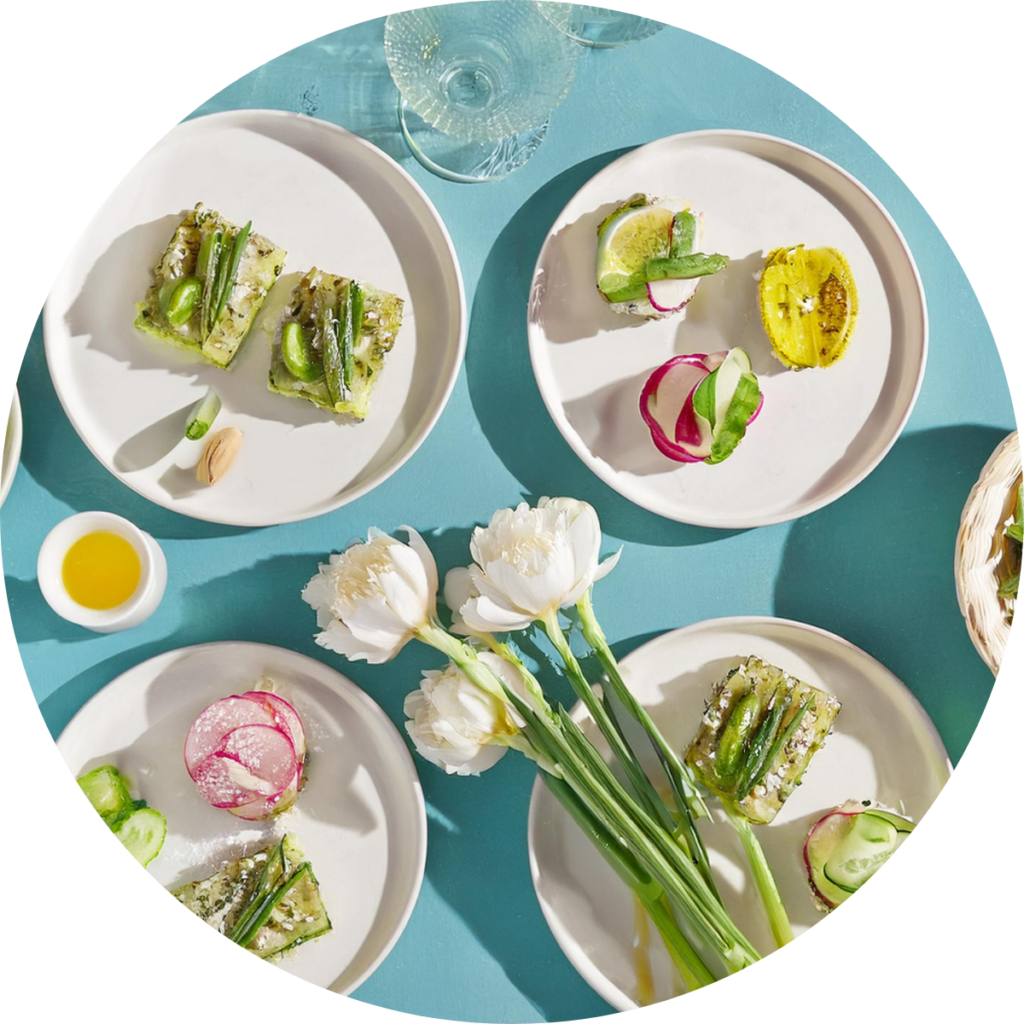
Spring Garden
A bright spread full of the flavors of spring—crisp veggies, herbed crackers, vibrant dips, and sweet fruits will help celebrate the season of renewal.
- Carbs: Seeded crackers, herbed focaccia bread, pita chips
- Dips: Pea and mint hummus, cashew ricotta
- Meat & Cheese: Smoked carrot lox, strawberry Basil Fromage
- Fruit & Veg: Spring onions, baby carrots, rainbow radishes, sugar snap peas, strawberries, apricots, kiwi
- Nuts: Pistachios, jordan almonds
- Pickled: Asparagus, radish, cornicons
- Extras: Sprouts, vegan hard-boiled eggs (if you’re an overachiever), edible flowers
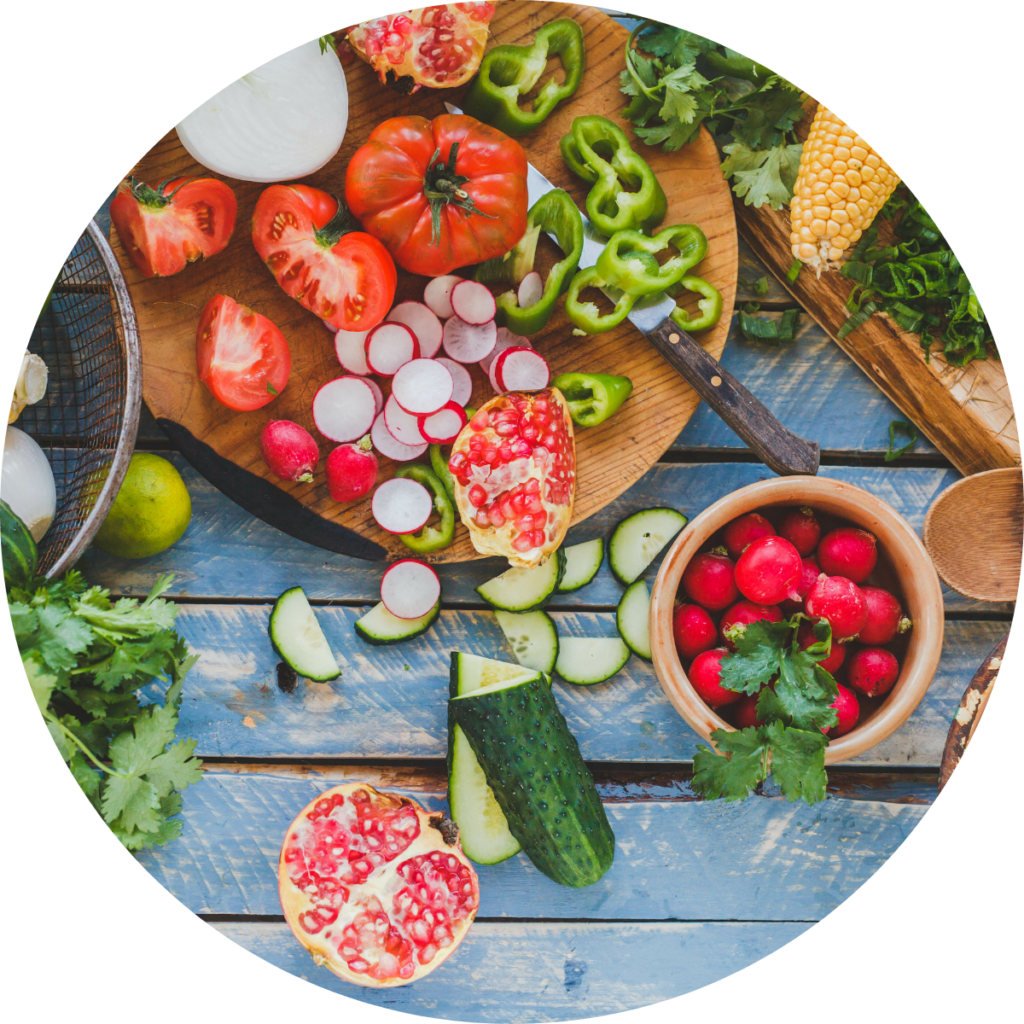
Summer Bounty
A bold and colorful spread inspired by summer cookouts, featuring juicy fruits, bbq favorites, and vibrant dips.
- Carbs: Grilled baguette slices (brushed with olive oil), flatbreads, corn chips
- Dips: Roasted red pepper hummus, vegan ranch, guacamole
- Meat & Cheese: Vegan sliders, vegan mini corn dogs, Chao vegan cheese slices
- Fruit & Veg: Cherry tomatoes, cucumber, grilled zucchini, grilled corn rounds (cut into small sections), strawberries, watermelon, cherries
- Nuts: Cashews, almonds
- Pickled: Okra, green beans
- Extras: Fresh herbs
Charcuterie Accoutrements
What are we fancy around here with TWO french words in a title? Le sheésh. Here are some considerations as you bring your charcuterie visions and festive gathering to life:
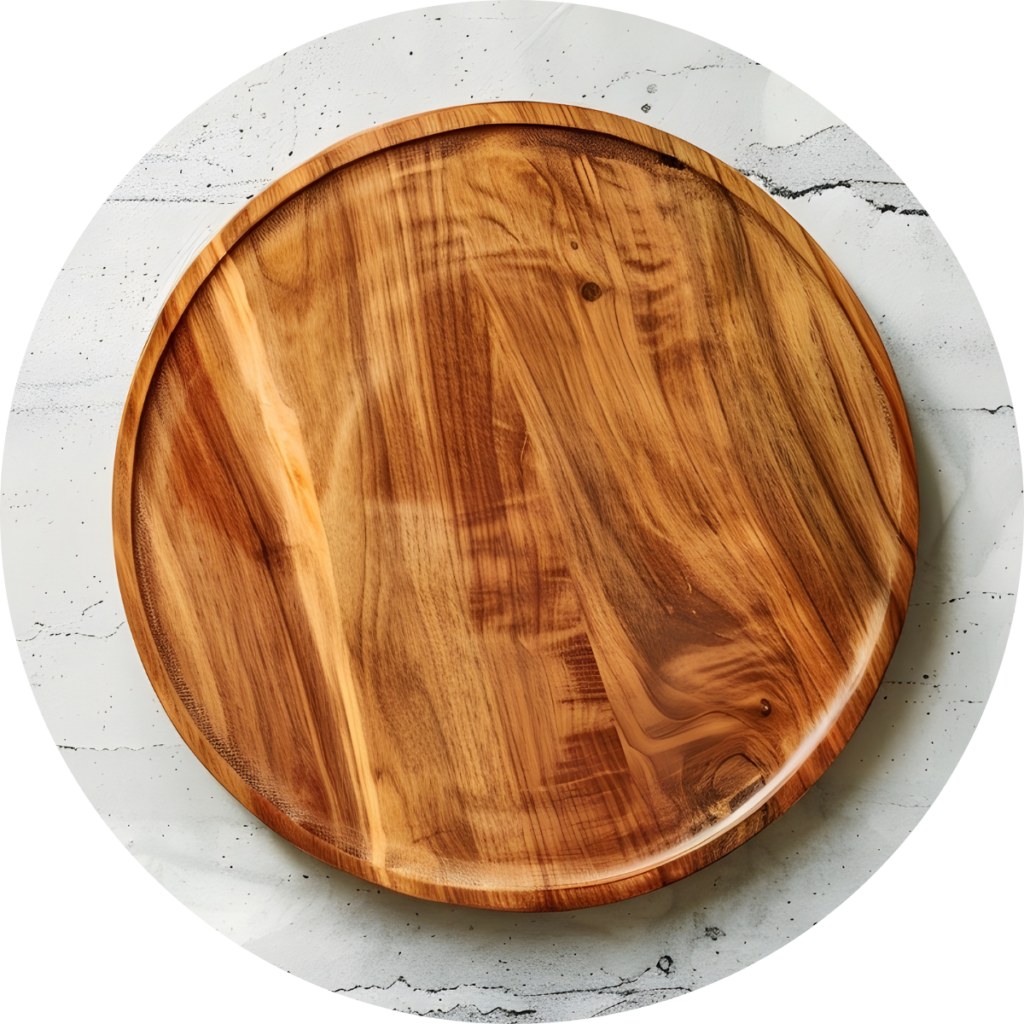
The Board Itself
Though cutting boards are the classic base for a charcuterie spread, you might also opt for a marble board, slate slab, or any other food-safe tray that you have at your disposal. Note that if your board is sufficiently stuffed, you’ll hardly be able to see the bottom anyway. Etsy has some lovely board options if you’re in the market for one.
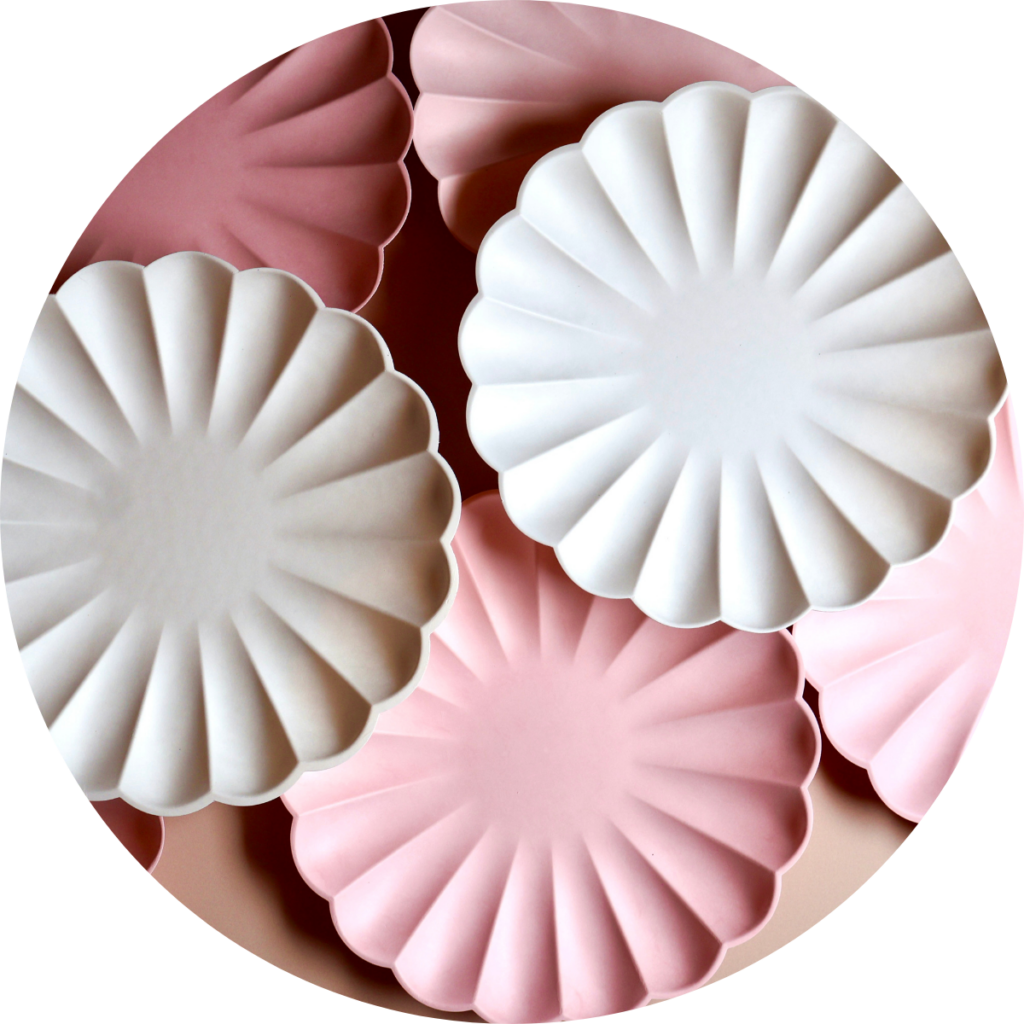
Partyware
Remember your spoons, forks, and knives for serving, plus tooth picks, pretty little plates, and napkins as needed.

Beverages!
With the pickables accounted for, you can turn to the sippables: bring it all together with your favorite vegan wine or nonalcoholic cocktail.
Featured image by Florah
